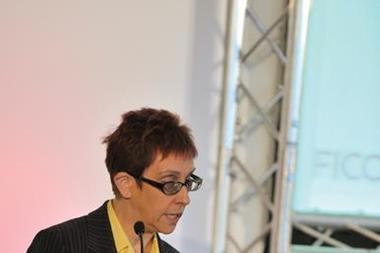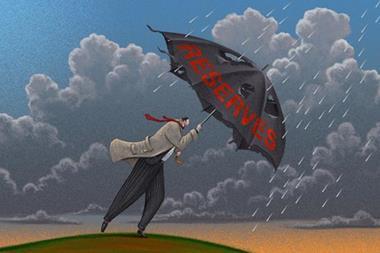The car insurance market is attempting the tricky manoeuvre of turning itself around after years of poor underwriting performance. But is it possible to make money from motor? Here are seven ways to roar ahead of the competition …
The motor insurance market has pulled itself back from the brink. In a salutary tale for all insurers drawing on reserves to prop up their results, motor insurers used this mechanism to such an extent for most of the last decade that in 2009 reserves seemed to dry up, just when claims increased in severity and frequency, especially for bodily injury. As a result, motor’s 2009 reported net combined ratio was a dismal 120%.
Now, after years of poor underwriting performance, the market has finally started pricing for profit: the Confused.com/EMB Car Insurance Price Index shows that car insurance prices rose by 31% in the year to July 2010.
However, the motor market is hardly out of the woods. This is still a fiercely competitive business. Standard & Poor’s, which compiles the Top 50 data, warns this year that the price rises in the motor market remain insufficient to return it to a level of underwriting performance as was achieved in the middle of the past decade. So, just how do you make money from the motor market? Here are seven ways to do it:
1 Fully embrace aggregators – or avoid them like the plague
Staying off aggregators works for Aviva, it claims, because it means avoiding low prices and fickle customers.
The insurer’s UK motor business had a combined operating ratio of 104% for the first half of 2010, which is not bad relative to the rest of the motor market – although operating profit for its UK general insurance business fell to £268m in the first half of this year, from £284m in H1 2009. Admiral, meanwhile, which gets 89% of its business from motor, does the opposite in owning Confused.com – and it reported a 21% rise in pre-tax profit for H1 2010 year on year, to £126.9m. Confused.com, which sees about one million quotes a month, informs Admiral’s pricing, allowing it to compare a huge range of prices, and helps it understand how best to deal with other aggregators.
2 Tackle bodily injury claims
Beat the explosion in bodily injury claims, which has been fuelled by no win, no fee offers, by assessing it in detail and putting adequate reserves in place. Admiral finance director Kevin Chidwick says: “We have not seen a shock increase in bodily injury claims, although it accounts for 50% of our business, because we have direct access to our customers and can therefore keep a close eye on their claims behaviour.”
3 Get good reinsurance
Munich Re underwrites about 50% of Admiral’s book. Chidwick says: “Reinsurance helps us enormously in terms of our scope for growth because it means the regulator requires us to hold less capital – since the risk is taken off our balance sheet – so we have more to invest and return to shareholders.”
4 Crack down on fraud
The ABI says fraud adds £44 a year to the average motor policy. Of course, if you insure someone and discover later they implied they were a better risk than in reality, legally their claim must be paid all the same. Tackle this with stringent systems checks, says PricewaterhouseCoopers partner Paul Clarke. “Use all data sources available to get as detailed a picture as possible of the client, from past claims information to credit scoring.” Retaining call centres and increasing phone contact with customers also helps – Admiral’s call centre employees, for example, are trained in spotting tricks such as setting up a policy in a parent’s name when they are not in fact the main driver.
5 Stick to your knitting
Sabre Insurance, which saw annual pre-tax profit for the year ended December 2009 nearly double to £38.8m, focuses on higher risk customers, such as young people and convicted drivers. Specialising in a niche allows you to know your customers inside out and segment them into more specific groups, enabling you to price more accurately.
6 Spruce up your brand
Products have been commoditised in the motor market, particularly with customers using aggregators to compare prices and switch frequently – Admiral estimates that 70% of customers try to find a cheaper policy every year and 50% will change their deal. However, if your brand is strong, customers will consider paying more. PricewaterhouseCoopers’ Clarke says: “Even price comparison websites acknowledge that people will pay for a brand they trust, so it’s worth investing in branding.”
7 Cross-sell
Use motor policies to get customers in the door and then offer them more profitable products. Clarke says: “Some companies make little profit from motor insurance but they cross-sell other, higher margin, services to those customers, including breakdown, legal expenses and travel. If you pass the customer on to an external provider – say, a claims lawyer – you can also get referral fees, which are of course risk-free. Up-selling is a good way to make money when customers are very sensitive about price.” IT
Hosted by comedian and actor Tom Allen, 34 Gold, 23 Silver and 22 Bronze awards were handed out across an amazing 34 categories recognising brilliance and innovation right across the breadth of UK general insurance.












































